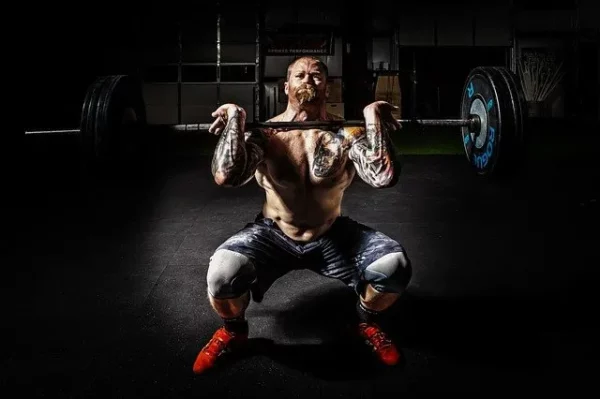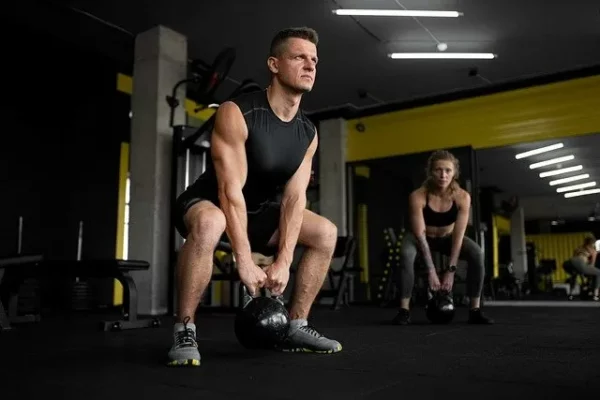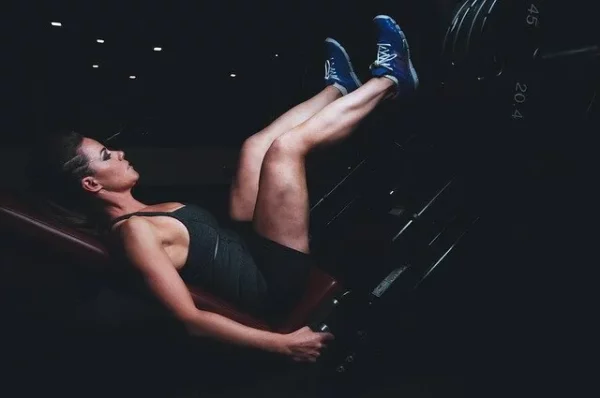In This Article
One of the most common complaints heard around the gym floor has to be knee pain, and more specifically knee pain with squats.
It seems like every lifter has had to deal with knee pain at one time or another.
That raises two questions: what causes knee pain with squats and what can you do to fix it?
Our Physiotherapy team has put their wisdom into a few points to answer each of those questions.
What causes knee pain with squats and lunges?
The most common reason behind pain in knees with some gym exercises relates to cartilage, with either a temporary overload or an underlying issue leading to pain.
The hard cartilage inside the knee, known as osteochondral cartilage (not to be mixed up with the softer cartilage known as the meniscus) is a smooth surface that allows the joint to slide and move freely.
When you feel knee pain with squats, it’s because this osteochondral cartilage is protesting when pressure is applied to it.

That doesn’t automatically indicate that you’ve got any damage or injury to the cartilage, just that it’s not used to that type and amount of loading.
If a person who hasn’t performed loaded squats before tries to lift a decent amount, the cartilage sends a signal that it’s experiencing a strong sensation, which is interpreted as pain.
The cartilage then undergoes a reaction that causes pain and sensitivity for the next few days.
If a seasoned lifter lifts the same weight, their knee cartilage goes through the same load as our newbie friend. But they don’t experience pain. Why?
Firstly, the cartilage is thicker and better quality thanks to years of previous lifting and loading.
Secondly, they still experience a sensation from their cartilage, but their brain doesn’t interpret this as pain. They’ve felt it before, so the brain registers it as a normal and transient sensation.
The other category of knee pain with squats is those who have some damage to the cartilage surface.
The cartilage itself might be worn, known as osteoarthritis, which thins and degrades the cartilage.
Or it might be softened due to previous repetitive overload. Or it might have a little divot in it from a previous accident.
The main difference with this group of people is that they experience pain AND swelling after squats.
It’s worth noting that the presence of swelling doesn’t always indicate cartilage damage, and the absence of swelling doesn’t rule out damage either.
How do I fix knee pain with squats and lunges?
The simple advice is that you need to reduce the overload on the knee cartilage. But that’s easier said than done.
Lighter weights is a “simple” alternative but it’s quite ineffective. You won’t get much stronger, the cartilage won’t adapt to heavier loads and the pain will still return when you get back to the same heavier weight.
So here are our three simple fixes for knee pain during squats that won’t compromise your rate of improvement.
Reduce depth, increase weight
If it’s sore on double leg squats but only in the deeper part of the movement, switch to half depth box squats for a month.
You can load these up heavier than your full depth equivalent to account for the reduced range.
Move the load forward

Another way of offsetting knee pressure during squats is to change the position of the weight.
Switch to a forward-positioned weight such as a kettlebell squat (pictured, left), goblet squat or barbell front squat.
Better still, you can use a counterbalance squat, when the kettlebell swings forward with straight arms as you squat – the opposite to a kettlebell swing exercise. Just note that you can’t load that up too heavy compared to your regular squats as your arms will limit the max load.
Focus on hip dominant exercises
If it’s sore on double leg (classic) squats, even at half depth, the cartilage is too sensitive for all squat variants.

Switch to deadlifts and/or hip bridges for 3-4 weeks before retesting squats to see if the knee pain has settled.
Leg press can also be useful as an alternative to back squats, but be sure to position your feet high on the plate to reduce knee cartilage load.
Knee pain during lunges?
Lunges are notoriously risky for knee cartilage. Aside from high loads on the knee during the movement, they’re more prone to stability and alignment issues compared to regular squats.
If you’re only experiencing knee pain with lunges, switch them out for squats and deadlifts for a month and see if the knee pain settles.
Knee pain during single leg squats?
If it only gets sore on single leg squats, it tends to indicate that you need to work on your stability.
Stop single leg squats and switch to double leg squats for a month or so.
Concurrently you can add in some stability work with a straight knee, like a single leg Pallof press.
Have you still got knee pain with squats after modifying your program?
If you still feel knee pain with squats after reducing your knee loading for a month, it’s time to get it checked out by a health professional.
It might be as simple as some customised program modifications or additions. It might need a short course of anti-inflammatory meds.
But save yourself the headache of a more significant issue by checking it out early.
Don’t mask it with meds or knee wraps and braces until you’ve identified and addressed the cause.
And lastly, avoid complete rest (ie. no exercise) as a solution.
This tends to start a counterproductive cycle of pain -> rest -> weakness -> more pain -> more rest… well, you get the idea.
